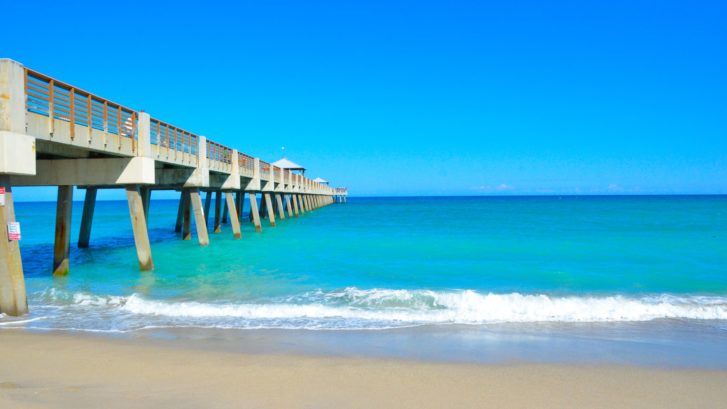Summer Beach Dangers
Jupiter, Florida, has some of the most alluring beaches in the world, so it’s no wonder that visitors as well as locals like to spend so much time there. Lurking beneath all that beauty and fun are some hidden hazards that could ruin your day in the sun, or even end up killing you. Your primary doctors in Jupiter at MD 2.0 often end up treating patients for injuries that could be avoided. Here are 10 hazards to watch out for when you head to the beach.
1. Lightning
An average of 33 people are killed by lightning every year. The rule of thumb is, if you can hear thunder, lightning can find you, especially on an open beach. “When thunder roars, go indoors” is the perennial warning. This means inside a hard-top vehicle with the windows rolled up, or a sturdy building away from windows and doors.
2. Rip Currents
Rip currents or rip tides are powerful, invisible rivers of water formed when water rushes away from the shore toward the open ocean. Always swim when lifeguards are on duty. If caught in a rip current, swim parallel to the shore until out of it, then swim back to land at an angle.
3. Sunburn
Sunburn isn’t just unsightly, it can kill. In addition to eventually triggering skin cancer, it is as dangerous as any other burn. If a bad sunburn is accompanied by a headache, chills, or fever, consider this a medical emergency and get help immediately.
4. Heat
We have warned about heat exhaustion and heat stroke before, but here’s a reminder: Heat is the leading weather-related killer in the United states, causing more deaths than floods, lighting, tornados, and hurricanes combined, according to the National Oceanic and Atmospheric Administration (NOAA). Excessive heat kills, but it’s easy to overlook how hot you or your children are because of cooling ocean breezes.
5. Sharks
Dangers from sharks tend to be overblown, but they do exist. Swim in groups near the shore, avoid the water at dusk or at night, don’t wear shiny jewelry or brightly colored swimwear, and don’t go into the water if you’re bleeding from any wounds.
6. Microorganisms
Both the water and the sand can harbor various viruses, parasites, and bacteria that can make you sick. Never ignore warning notices that have been posted along the shoreline, and shower as soon as possible after leaving the beach.
7. Algal Blooms
Sometimes referred to as “red tides,” Harmful Algae Blooms (HABs) are dense populations of algae that form in waters along the coast that can sicken swimmers. As with microorganisms, pay attention to warnings from officials.
8. Marine Life
Sting rays, sea urchins, eels, jellyfish, and other forms of marine life aren’t out to get you, per se, but you are in their home. If you can’t see the bottom where you’re walking, do the “sting-ray shuffle” by shuffling along the water bottom to allow the creatures to get out of your way.
9. Sand Holes
Don’t dig holes in the sand, and watch for them when walking along the beach. More people are killed every year by collapsing sand holes than by sharks.
10. Physical Impairment
Don’t swim if you aren’t feeling fit. If you have been drinking alcohol, are sick, tired, or not feeling physically your best, stay out of the water. And heed the old wives’ tale about not swimming for an hour after you eat: Digestion can interfere with your muscles’ ability to cope with strong waves or tides.

